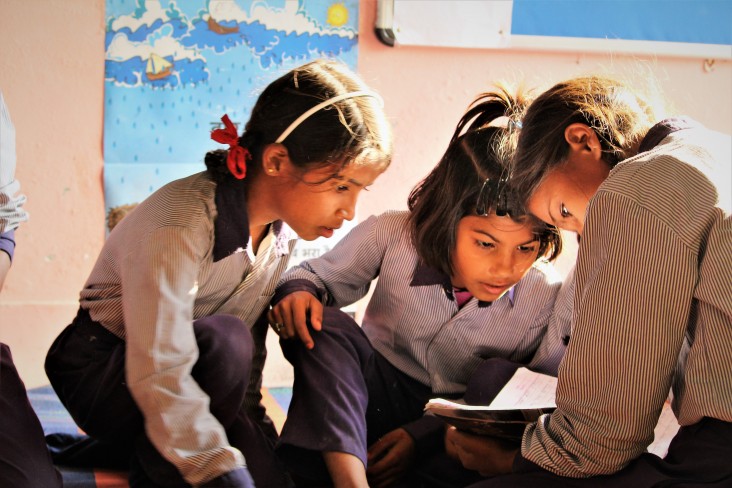India
- History
- Our Work
- Transforming Development Through Innovation & Partnership
- U.S.-India Triangular Cooperation
- Partnership for Energy Access and Security
- Partnership for Sustainable Forests in India
- Partnerships for Health
- Partnership for Education
- Partnership for Water Sanitation and Hygiene (WASH)
- Partnership for Food Security
- Partnership for Gender Equality
- Investing in Afghanistan
- Foreign Assistance Data
- Newsroom
- Newsletters and Fact Sheets
- Speeches
- Resources For Implementing Partners (RFIP)
- Careers
- Partnership Opportunities
- Success Stories
Speeches Shim

India is the second most populous country in the world and almost 30 percent of its population is age 14 or younger. This presents a huge opportunity for future economic growth and better quality of life for citizens. However, despite free access to education, 40 percent of students drop out of school before reaching the 8th grade and struggle with basic literacy. The Government of India 2018 Annual Status of Education Report states that only 56 percent of 5th graders can read a 2nd grade text. To boost child literacy rates, the Government of India is working to improve the quality of education in its schools.
USAID/INDIA PROGRAMS:
IMPROVING EDUCATION IN INDIA: Through its national literacy campaign Padhe Bharat Badhe Bharat (Read India, Progress India), the government is focusing on the reading skills of young children. USAID supports this campaign with its aim to improve the reading skills of five million primary school students to build a stronger basis for all their future education. USAID partners with the Government of India, the private sector, and civil society to create professional development programs for educators and to broaden access to age-appropriate books and classroom resources for students. These activities are part of USAID’s Global Education Strategy, launched in 2011 to improve the reading skills of 100 million children across the world. Successful models developed by USAID and its partners are scaled up by the public and private sectors.
ENHANCING PROFESSIONAL DEVELOPMENT: USAID and its partners have developed specialized literacy training materials for teachers, principals, school administrators and government officials. With training sessions and one-on-one mentoring, educators learn a range of new strategies to help students improve their reading skills. As a result, teachers can employ different resources according to student needs to teach the same curriculum more effectively. For example, now teachers are trained to use flashcards, games, storytelling, and group work to motivate and engage their students more successfully.
EXPANDING LEARNING RESOURCES: USAID and its partners respond to educators' need for more teaching and classroom materials that can help students read at higher levels. USAID develops and supplies schools with learning resources, including books of increasing difficulty for each grade level. Schools also receive additional workbooks, reading games on classroom tablets, and mobile apps that students use to continue learning even when they are not in the classroom. USAID projects have also established classroom/school/community libraries with interesting and age-appropriate books for students across primary grades. This helps them reinforce their reading skills, and provides them with the joy of reading through a variety of stories.
Achievements
- USAID-supported child literacy programs reached more than two million students.
- USAID-supported programs trained more than 61,000 teachers in improved teaching skills.
- 585,984 textbooks and other teaching and learning materials (TLMs) were provided under the USAID supported Education projects.
- In the most effective USAID-supported literacy schools, 88 percent of students can read a 2nd grade text with fluency and comprehension.
- USAID and its partners are working across 16 of India’s 29 states to improve reading skills in nine languages.


Comment
Make a general inquiry or suggest an improvement.